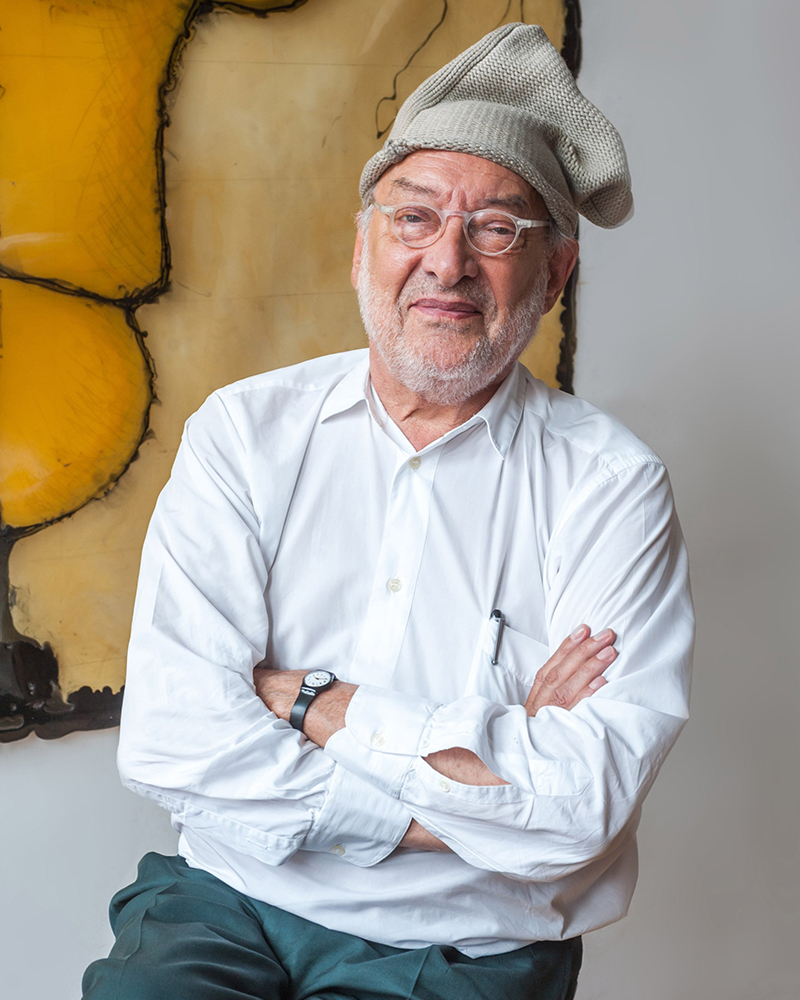Side Gallery
Side Gallery
WishlistFollow
Follow

Italian-born, New York-based architect and designer Gaetano Pesce (La Spezia, Italy, 1939 - 2024) is a groundbreaking figure whose work has pushed the boundaries of contemporary design. Pesce studied architecture at the University of Venice from 1958 to 1963, during which he joined Gruppo N, an avant-garde collective focused on programmed art, which drew inspiration from Bauhaus methodologies. Pesce's approach to design has made him a pioneering force in 20th- and 21st-century design, celebrated for his innovative spirit and unique approach to materiality and form.
A true multidisciplinary creator, Pesce’s practice spans architecture, urban design, industrial design, and interiors. His career, which now extends over six decades, includes landmark public and private projects in the United States, Latin America, Europe, and Asia. He has maintained a guiding philosophy that modernism is a dynamic approach to interpreting the present and envisioning a future that champions individuality and celebrates human expression.
Pesce’s teaching career has been equally illustrious, spanning over 28 years at leading institutions including the Institut d'Architecture et d'Etudes Urbaines in Strasbourg, Carnegie Mellon University in Pittsburgh, Domus Academy in Milan, Polytechnic University in Hong Kong, the School of Architecture in São Paulo, and Cooper Union in New York. His move to New York in 1980 marked a pivotal moment, solidifying his status in the international design scene after years in Venice, London, Helsinki, and Paris.
Pesce’s works are not merely functional; they are infused with narrative and philosophical depth. His designs can be found in over 30 permanent collections in the world’s foremost museums, such as the Museum of Modern Art in New York and San Francisco, the Metropolitan Museum of Art, the Vitra Design Museum, the Victoria and Albert Museum in London, and the Centre Pompidou in Paris. His pieces, like the iconic Up5 chair (often referred to as "La Mamma") and the Organic Building in Osaka, have become emblematic of his style—works that disrupt traditional boundaries between art, design, and industry. These projects showcase his commitment to expressive, human-centered design and experimentation with advanced materials and technologies.
Throughout his career, Pesce has been honored with numerous prestigious awards, including the Chrysler Award for Innovation and Design in 1993, the Architektur & Wohnen Designer of the Year Award in 2006, and the Lawrence J. Israel Prize from the Fashion Institute of Technology in New York in 2009. These accolades underscore his influential contributions to both design and architecture.
For Pesce, art transcends traditional definitions and does not belong on a pedestal; instead, it should serve as a creative response to the needs and realities of contemporary life. His fearless exploration of new languages and technologies in design has left an indelible mark on the field, inspiring generations to view design not just as a functional solution but as an essential expression of human experience.
ENQUIRE ABOUT THE DESIGNER